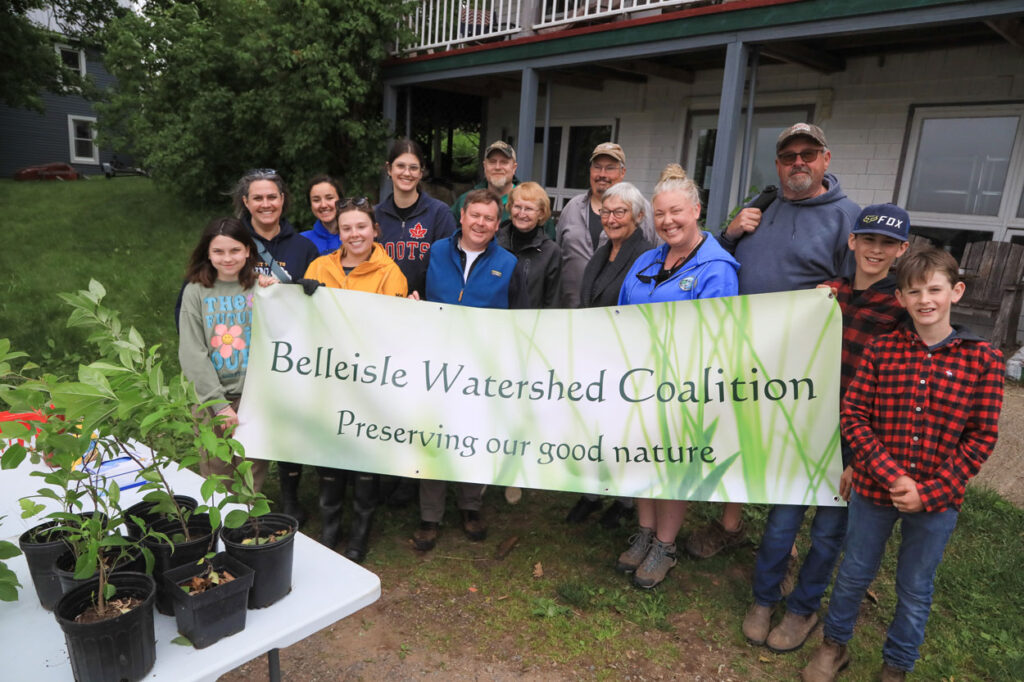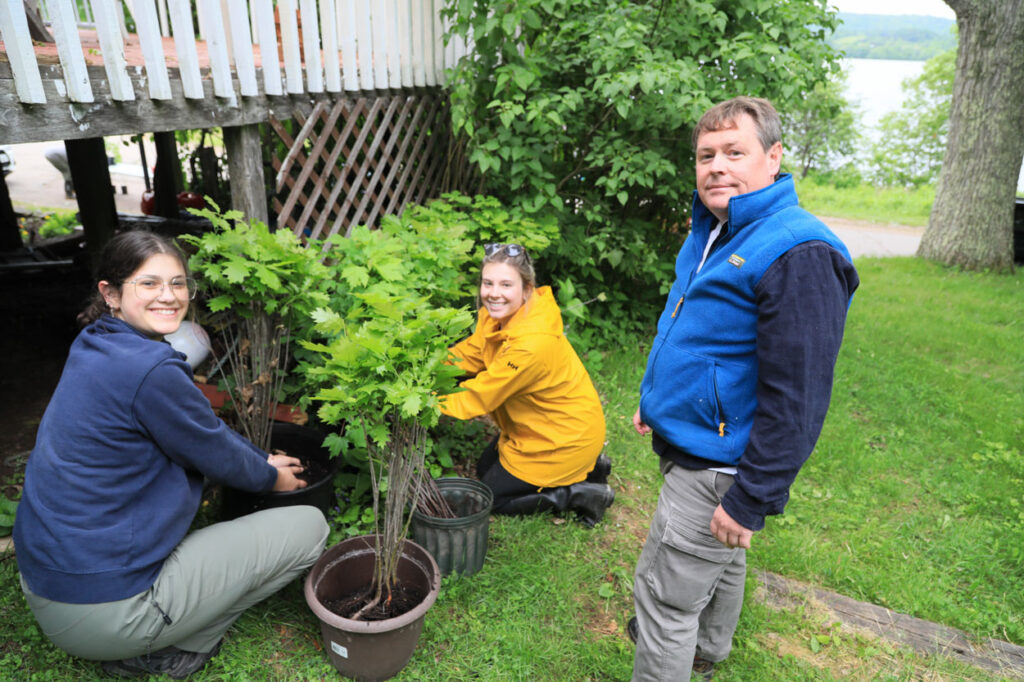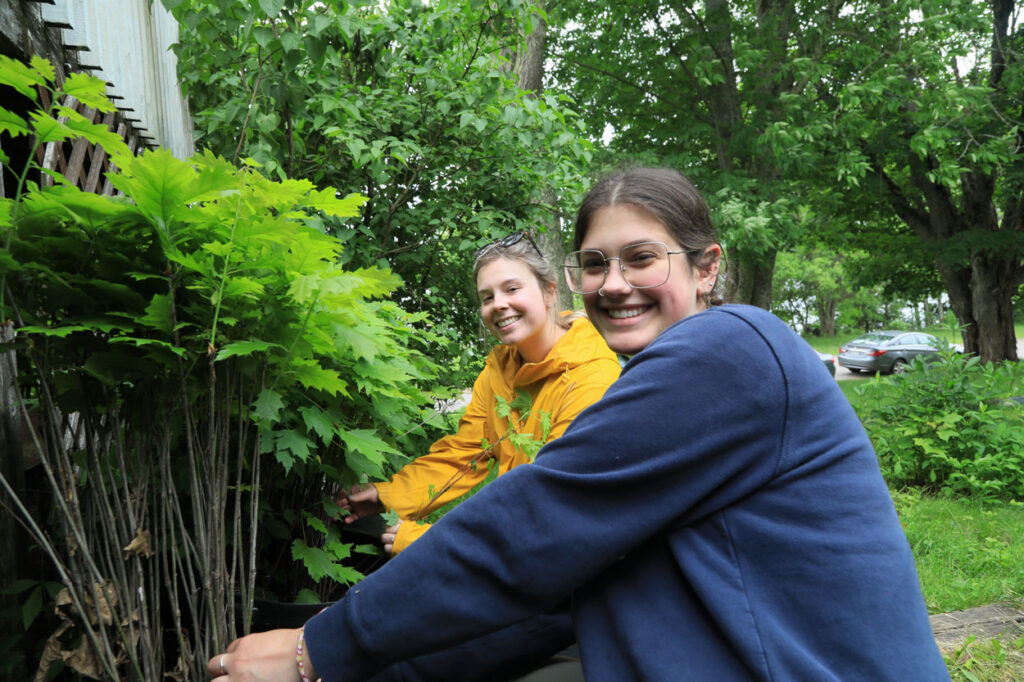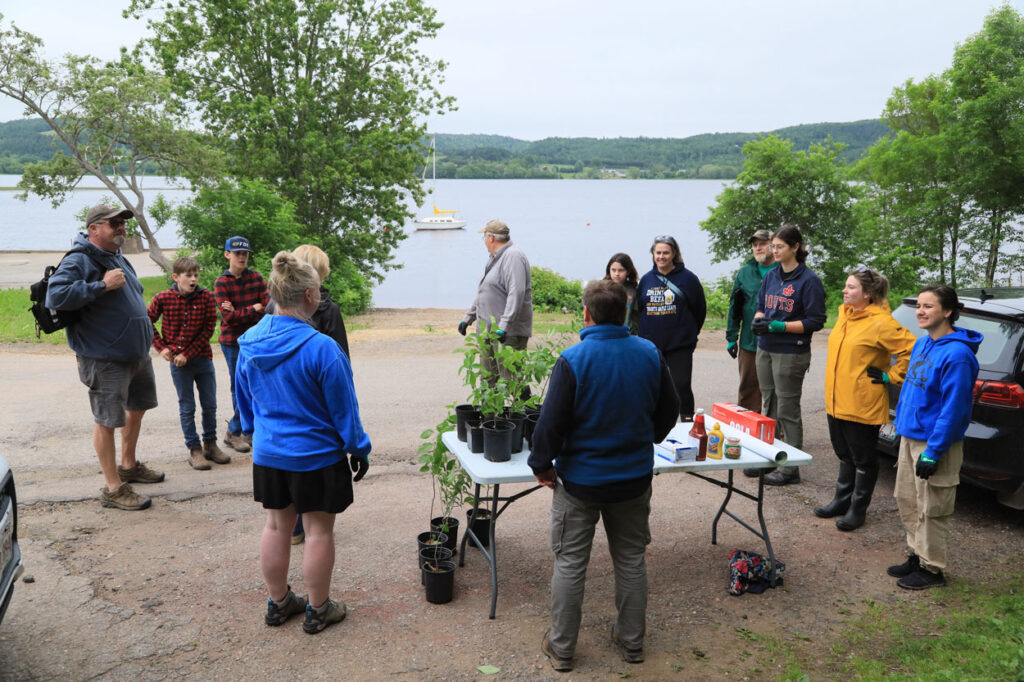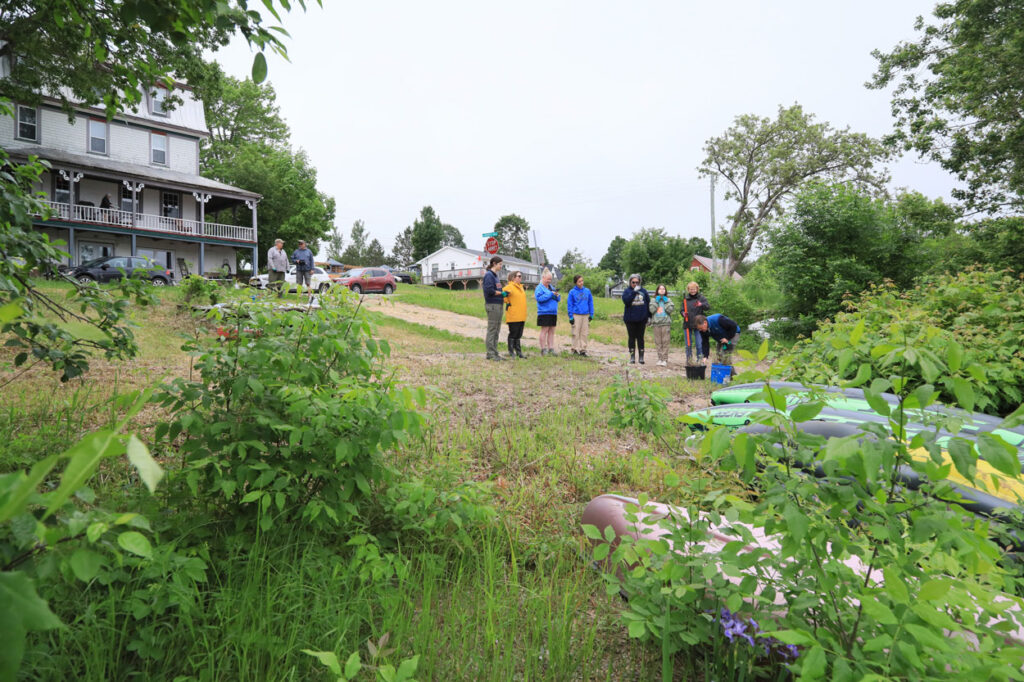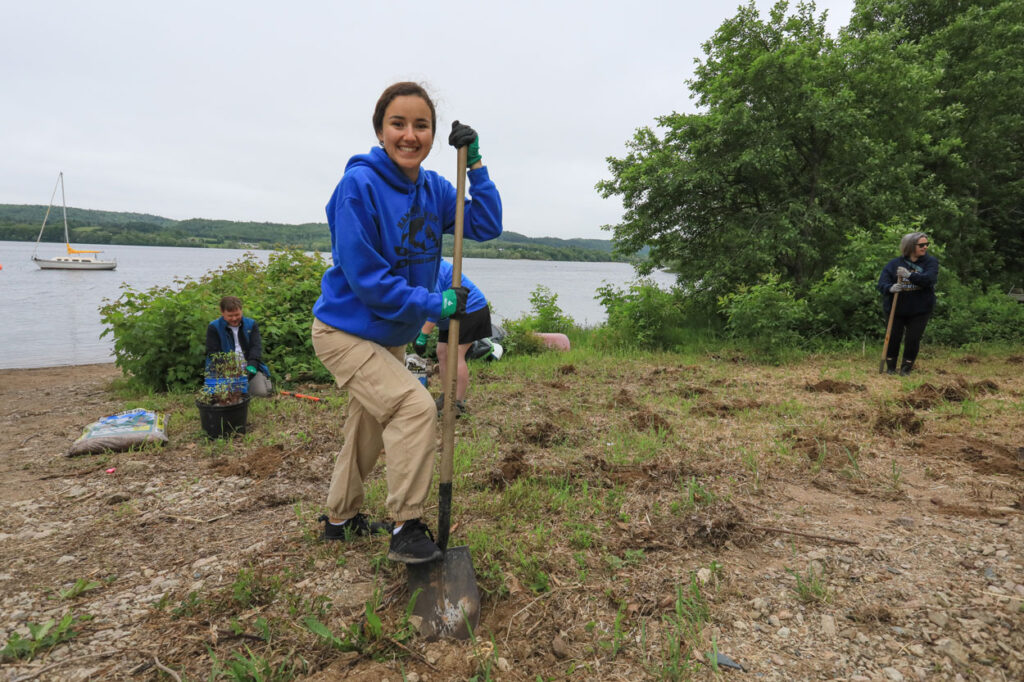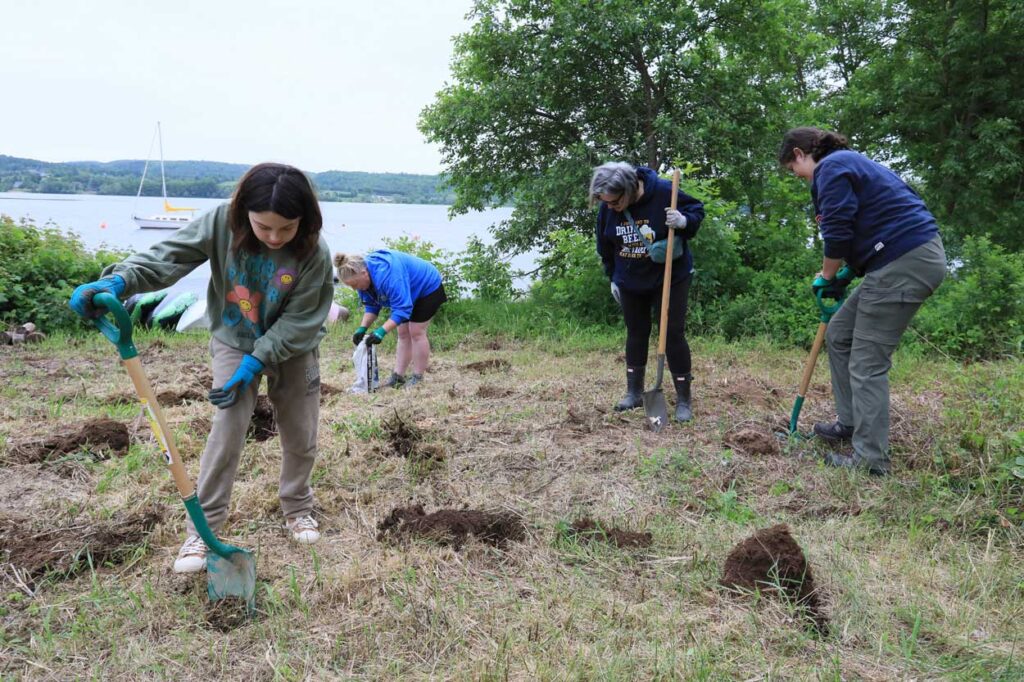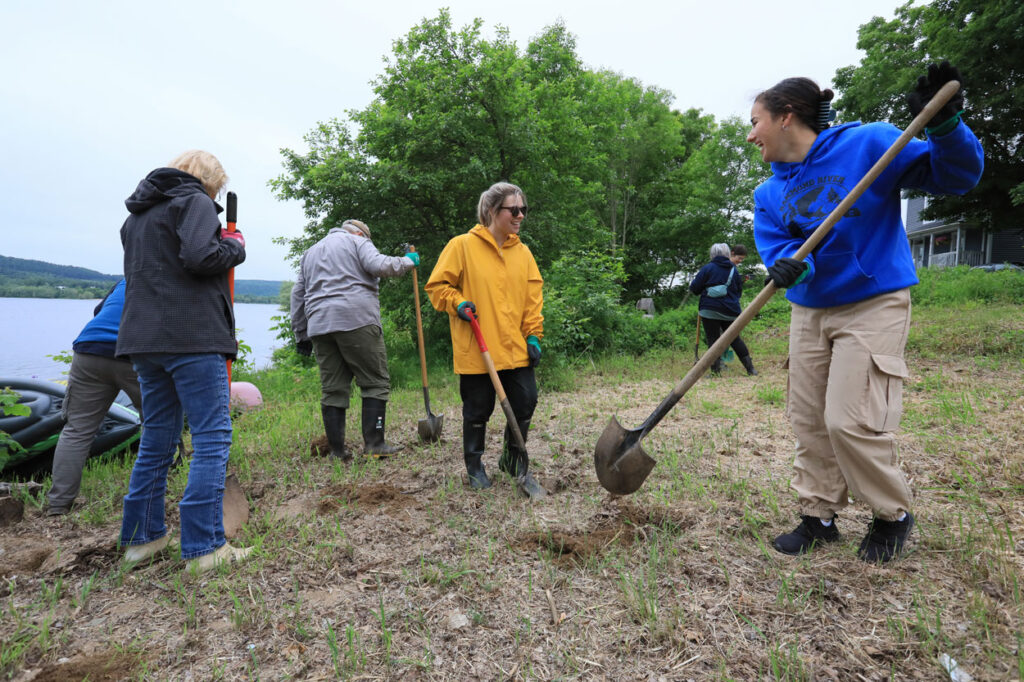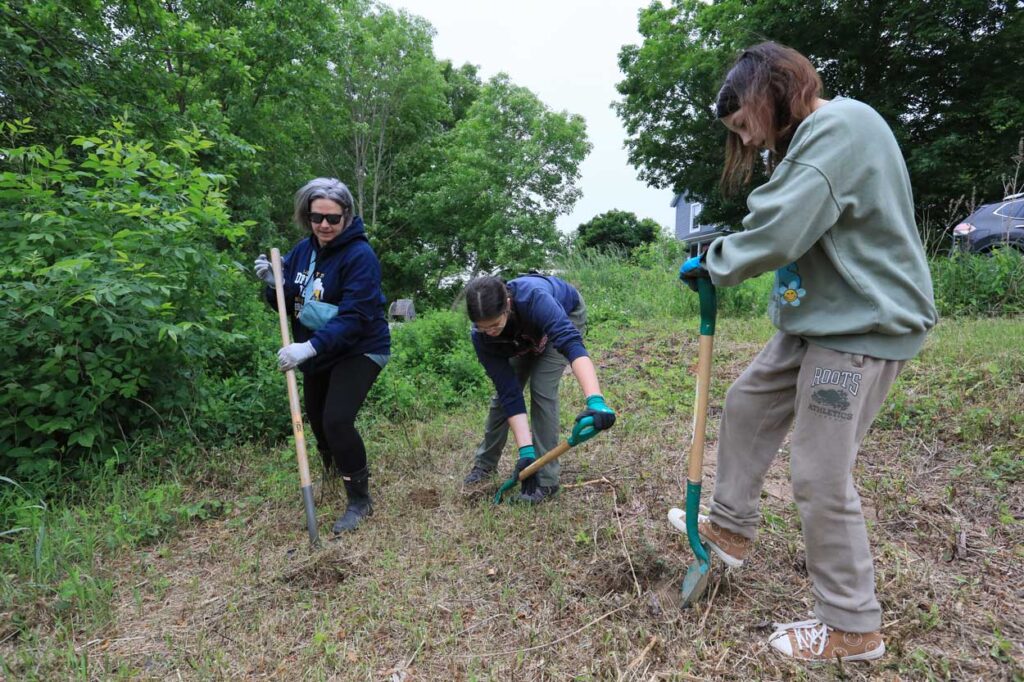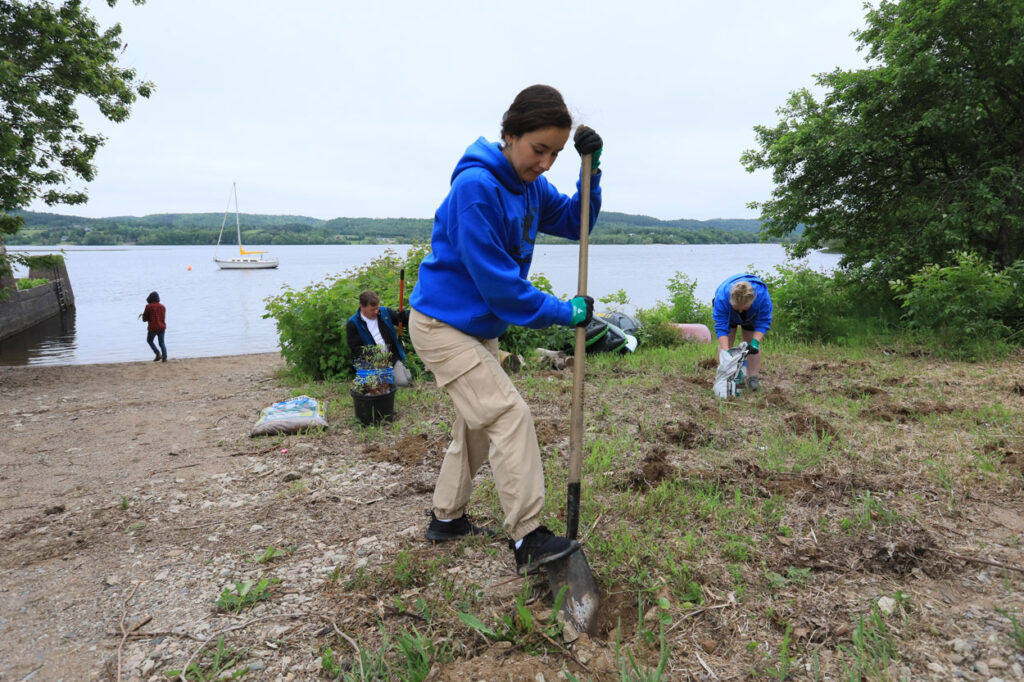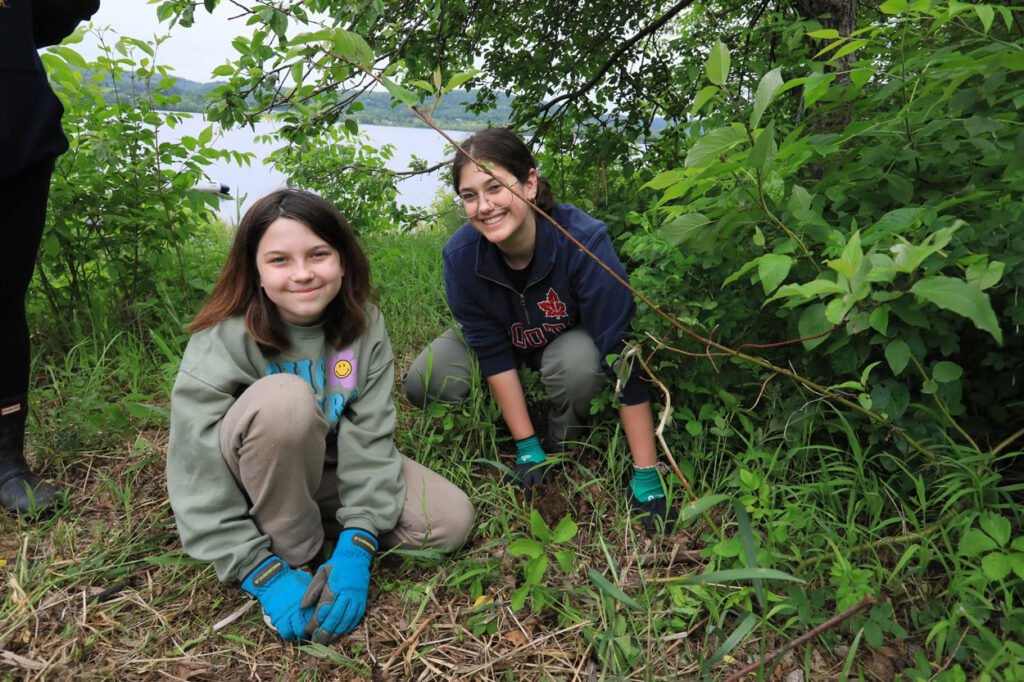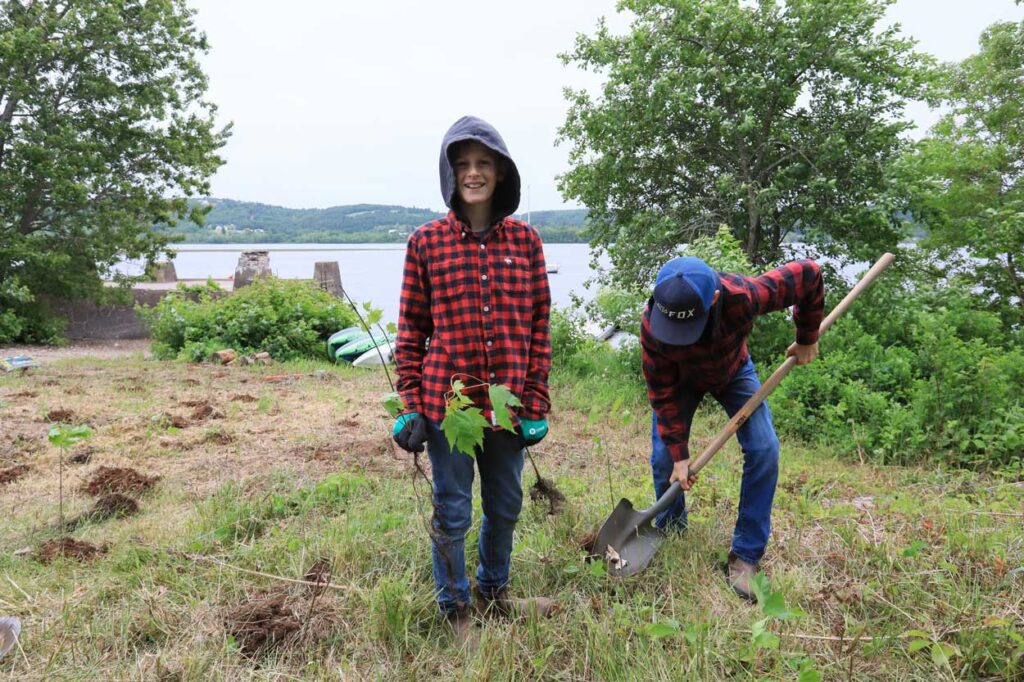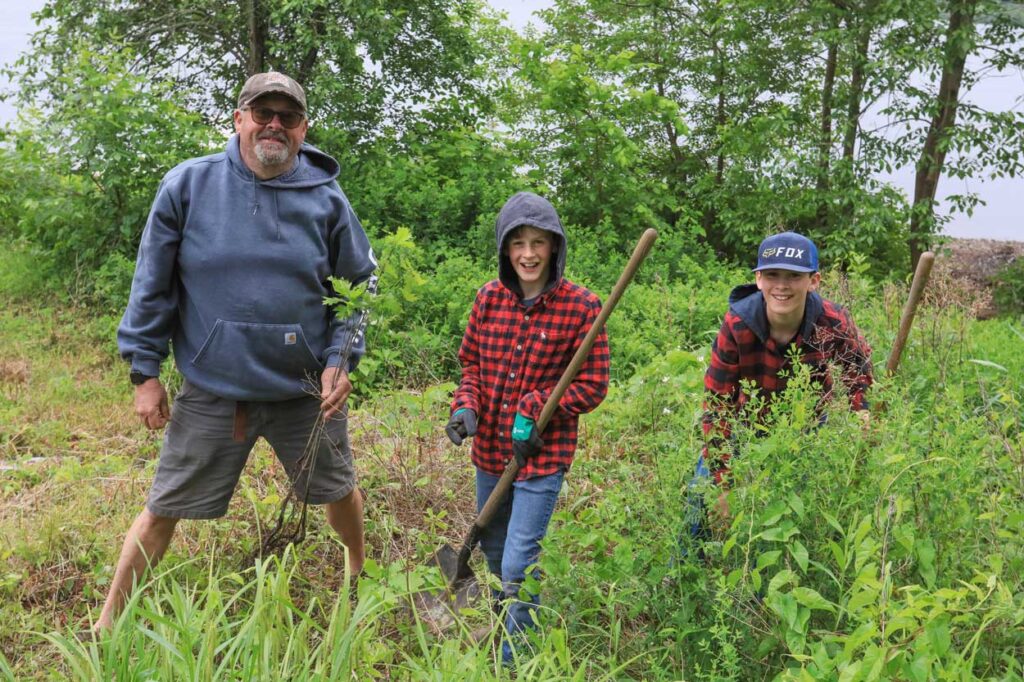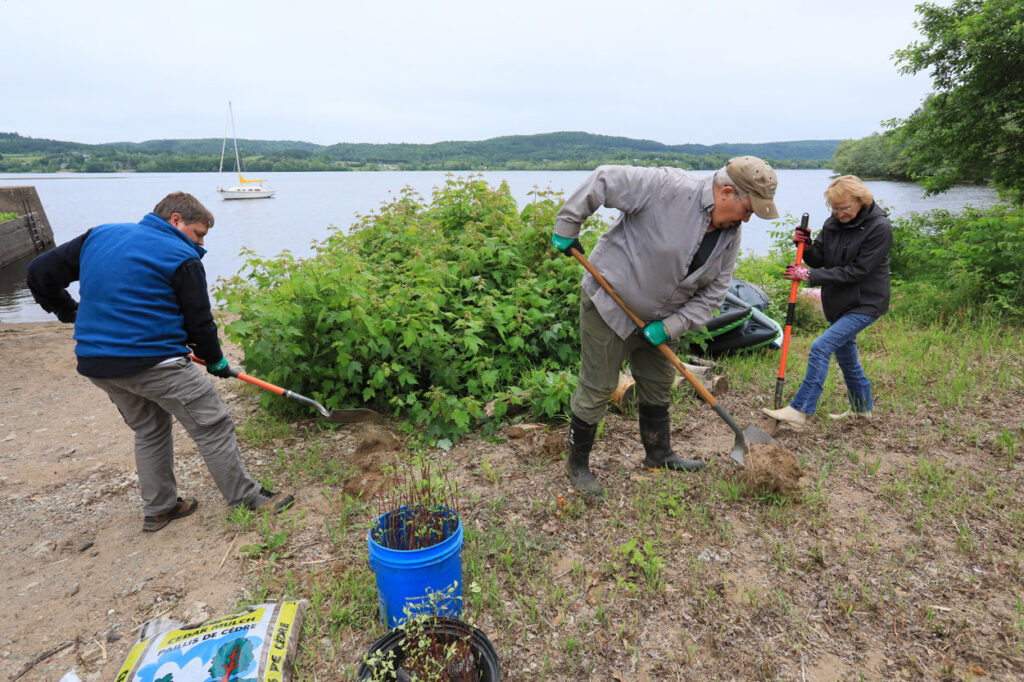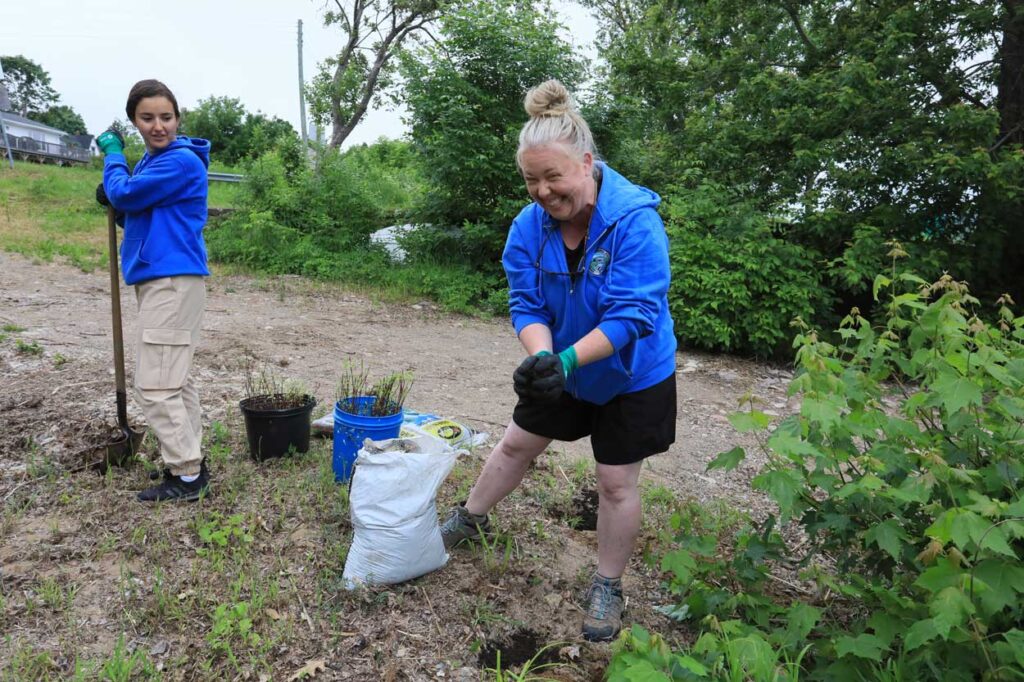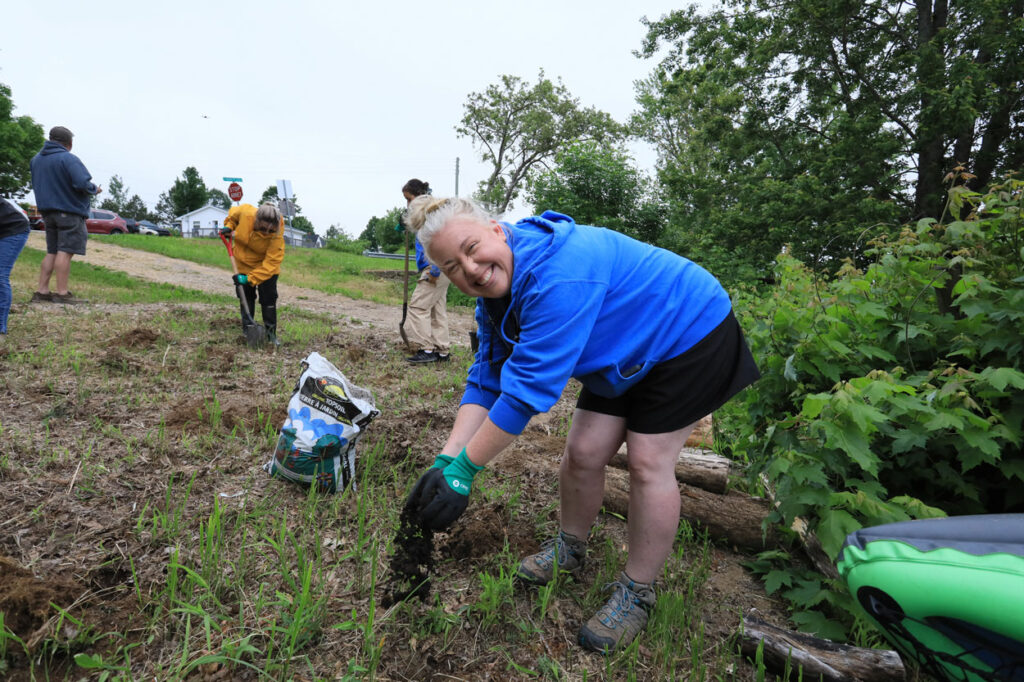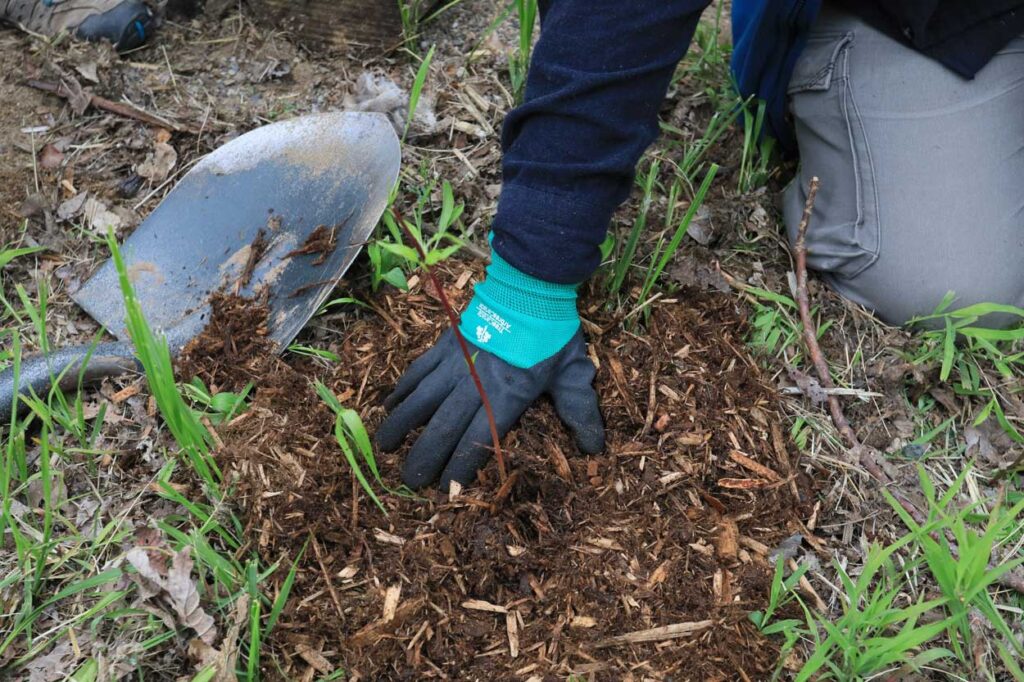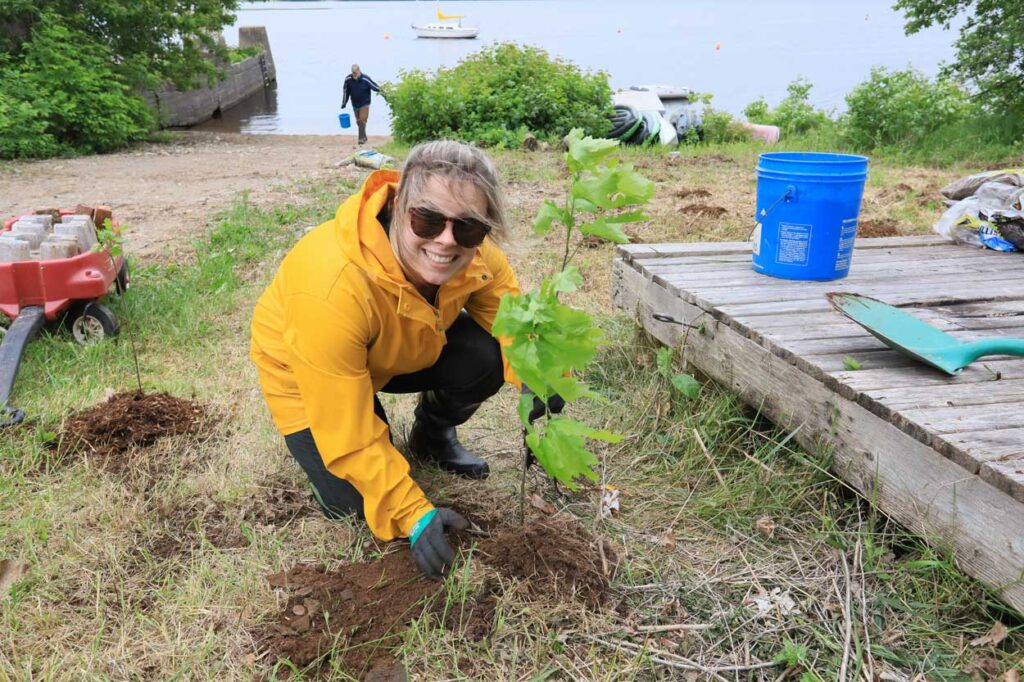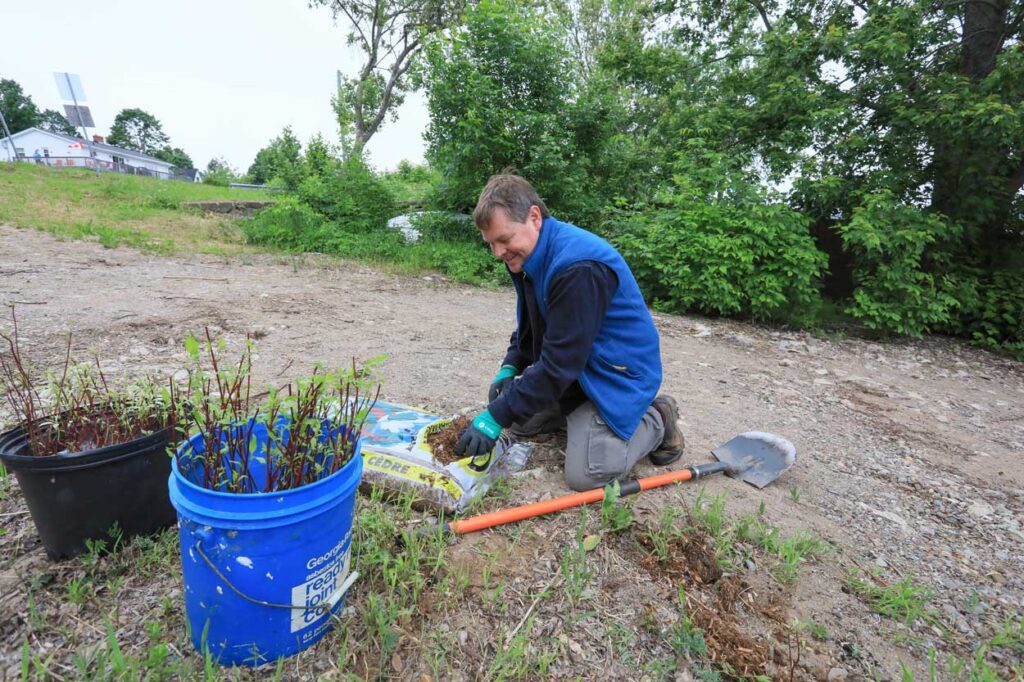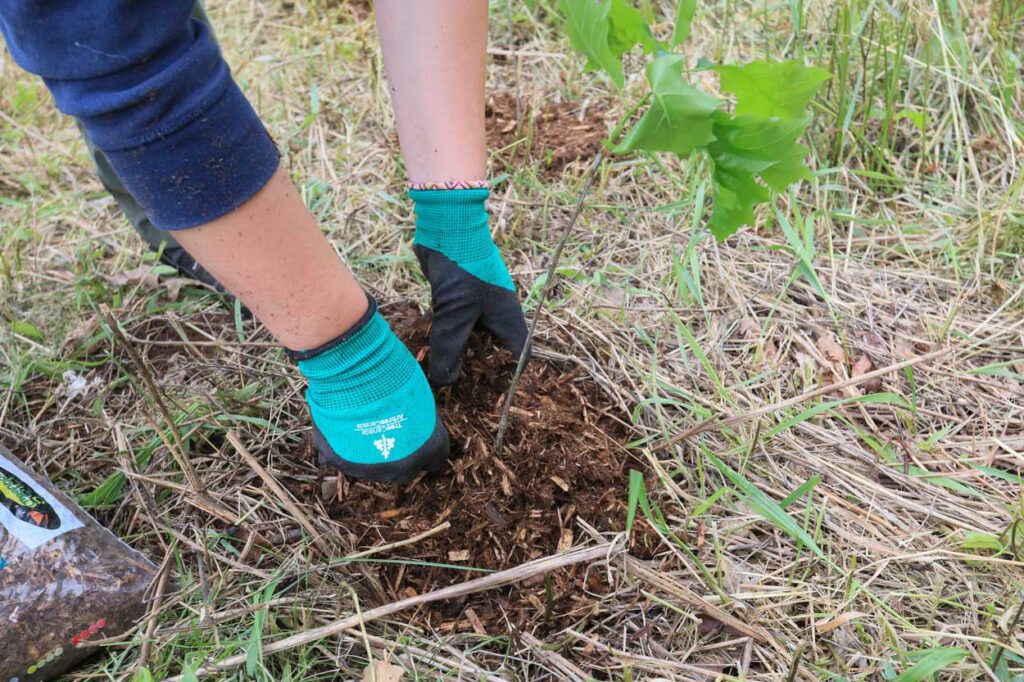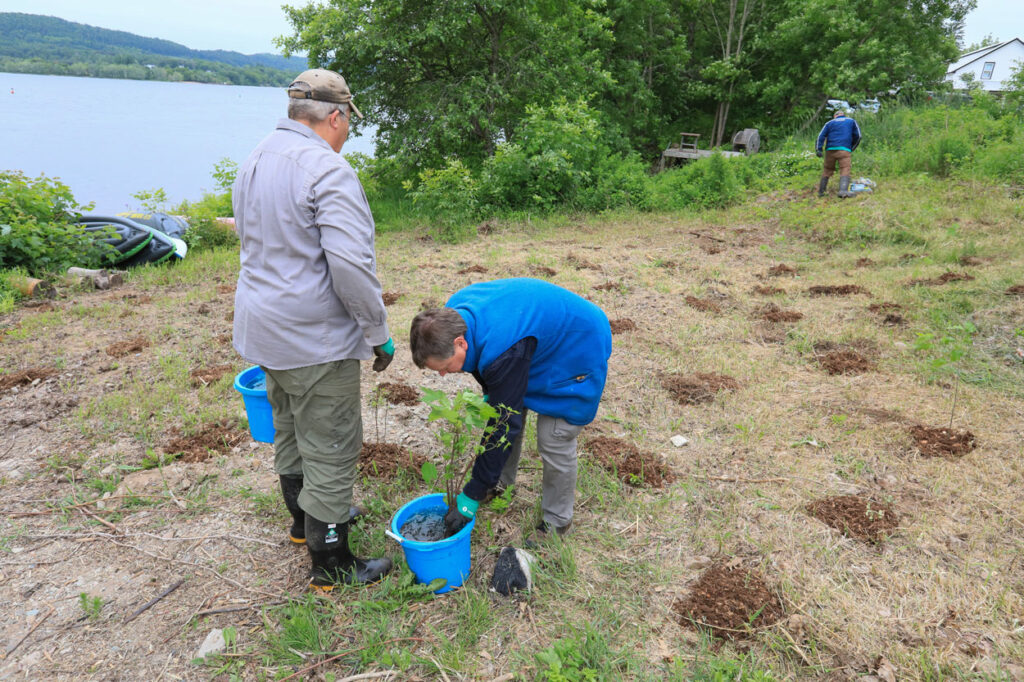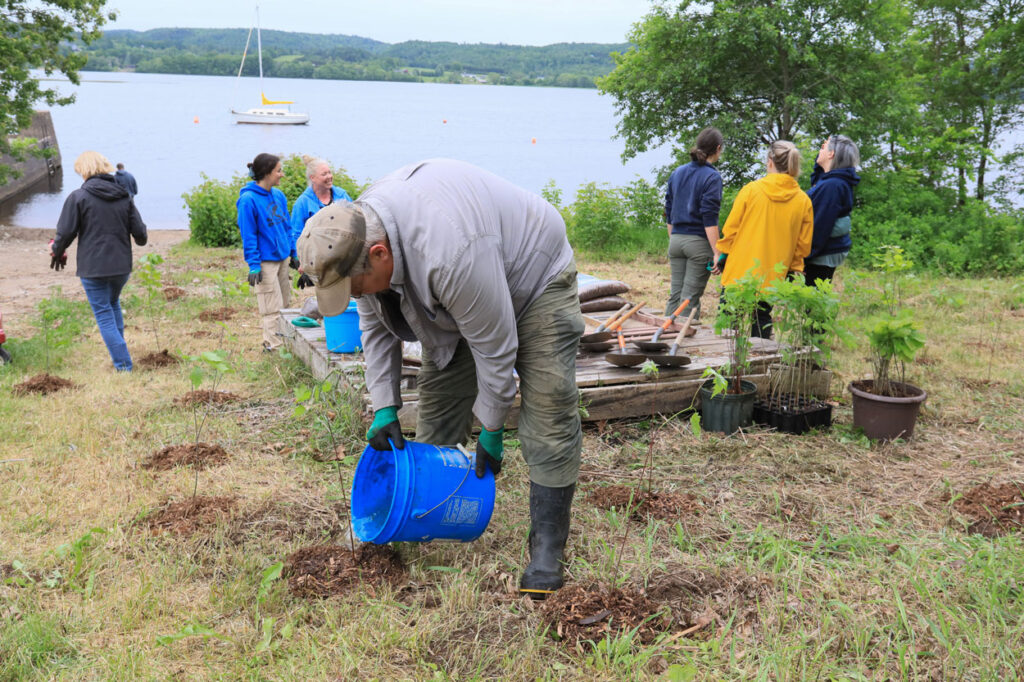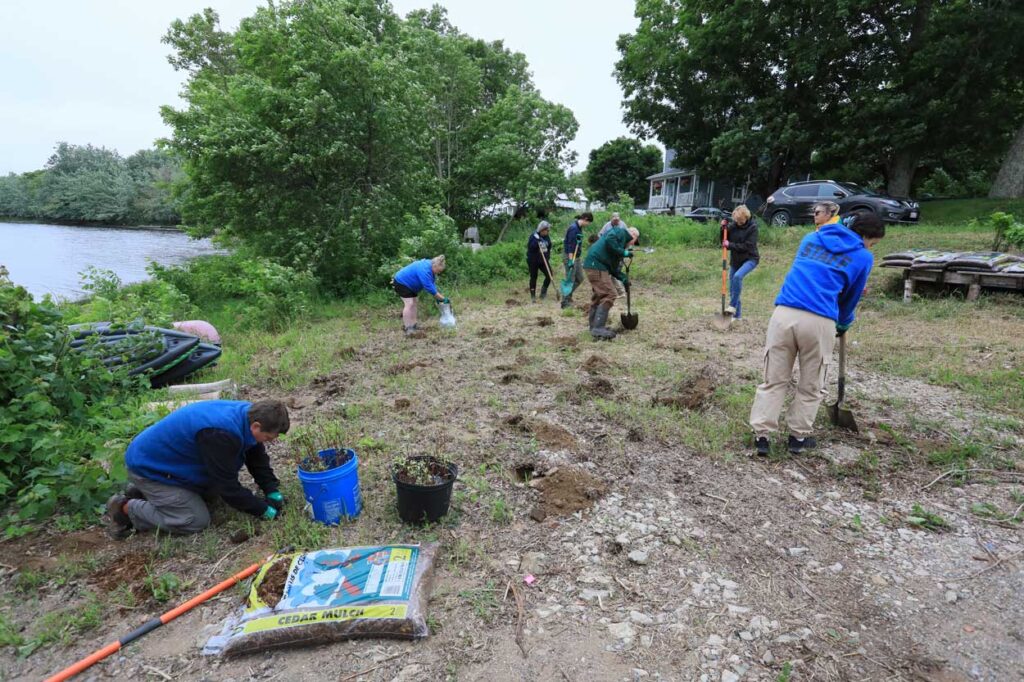Near the shorelines of Hatfield Point, New Brunswick, a remarkable project took place on June 17 to restore and rejuvenate the delicate ecosystem of Belleisle Bay, a fjord-like branch of the Saint John River. Thanks to a Tree Canada Treemendous Communities grant and project sponsor, Meighen Family Foundation, the event engaged local landowners, community members, and partners to help mitigate erosion and enhance the watershed’s riparian and aquatic habitats.
A total of 16 volunteers came out to plant 150 trees and shrubs at a site that had seen hundreds of years of degradation near the shoreline. Participants, equipped with shovels and saplings, worked tirelessly to plant a variety of native tree and shrub species, including bur oak (Quercus macrocarpa), red oak (Quercus rubra), red maple (Acer rubrum), black walnut (Juglans nigra), butternut (Juglans cinerea) and black cherry (Prunus serotina).
The success of this tree planting event owes much to the collaboration between the Belleisle Watershed Coalition and the community it supports.
The Impact of the Belleisle Watershed
“The Belleisle Watershed Coalition started in 2013, 10 years ago,” says Colin Forsythe, the Coalition’s Executive Director. “It was started by citizens that were very interested in preserving the Bay and at the time were concerned about the potential of a pipeline that was going to come through their community. Thankfully, that pipeline never came through the area.”
“That’s the core, the impetus of the project, is to help the community replant and repair and to learn about riparian restoration, and to take stewardship of the land.”
Today, the Belleisle Watershed Coalition (BWC) is a multi-stakeholder charitable environmental organization that supports scientific research, aquatic restoration, and environmental education within the Belleisle watershed and Lower Saint John River Valley. Covering approximately 37,000 ha, the coalition’s projects focus on water quality, environmental monitoring, fish and aquatic habitats, riparian assessment/enhancement/management, and community outreach.
To support riparian restoration, the Coalition launched the Plant Your Bank project, which focuses on “planting native tree and shrub species, assessing carbon sequestration via soil analysis and increasing awareness of the importance of riparian areas through landowner engagement.”
“With Tree Canada’s grant, there’s a tremendous opportunity to leverage more planting and to get more people involved,” says Forsythe.
Addressing Erosion and Habitat Degradation
Erosion is the geological process in which Earth materials are worn away and transported by natural forces such as wind or water. Erosion along the riverbanks can lead to the loss of fertile soil, sedimentation in the water, and disruption of aquatic ecosystems. By strategically planting native trees and shrubs, the event aimed to stabilize the riverbanks and reduce erosion. These plants act as natural barriers, preventing sediment runoff into the river and protecting the integrity of the riparian zone.
The restoration effort also aimed to improve the habitat quality of the Belleisle Watershed. Native trees and shrubs play a crucial role in supporting the diverse array of flora and fauna that depend on the riparian and aquatic habitats. Their roots help maintain the stability of riverbanks, reduce nutrient runoff, and provide shade, creating cooler microclimates that support aquatic life.
The Ripple Effect of Restoration
The impacts of the tree planting event near the Belleisle Bay extend far beyond the immediate site. By mitigating erosion and enhancing riparian and aquatic habitats, this restoration initiative contributes to the overall health and resilience of the Belleisle Watershed.
The trees chosen for this project “will also provide food,” says Forsythe. “So, people will be planting food for wildlife, and for potentially people. And so, it will double up [the impact] for the community to come out and plant these species, and watch it grow over time. And hopefully bring wildlife back.”
“You have to plant trees. You have to get them on the brooks. You have to cool the water. You have to reduce the runoff. All of this contributes to the health of the water. It all interconnects,” says Forsythe. “We can plant trees; you can be apart of it, and you can affect change over the long term.”
Back to all articles
